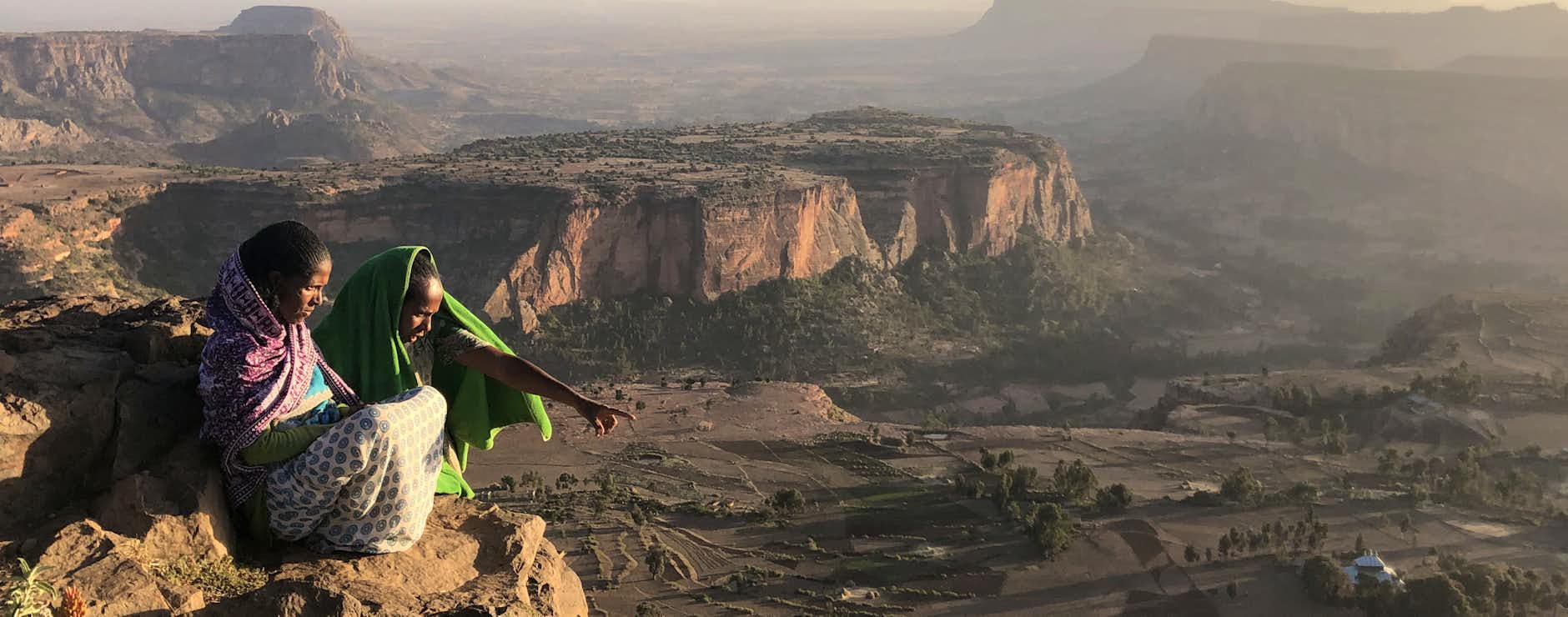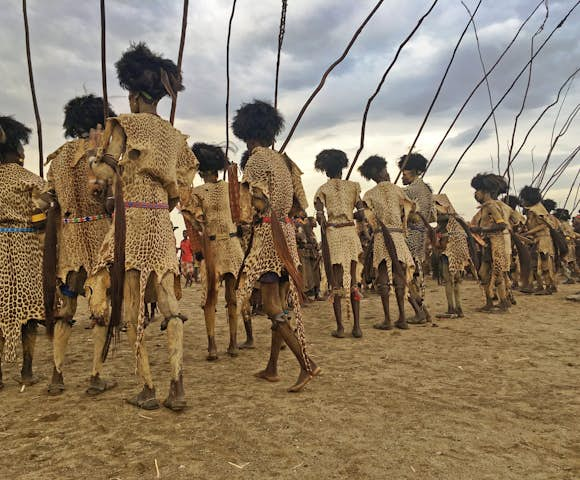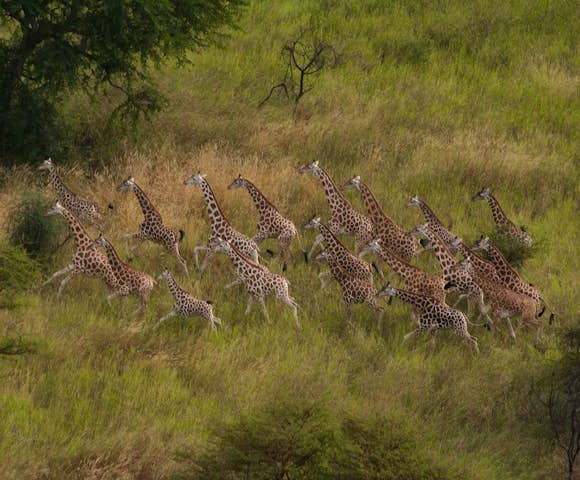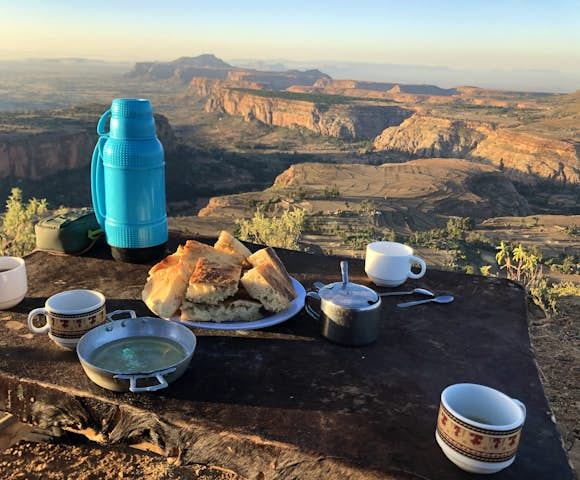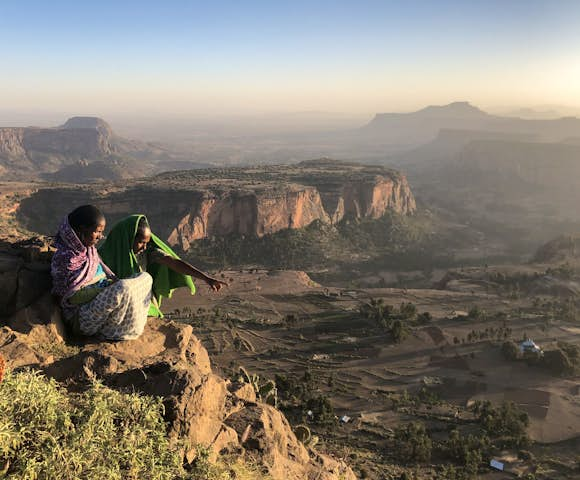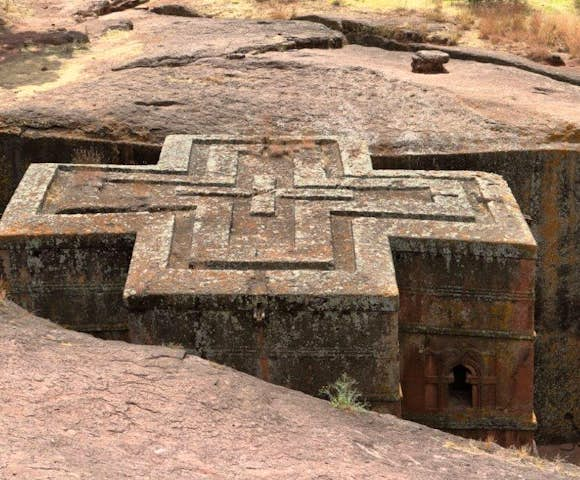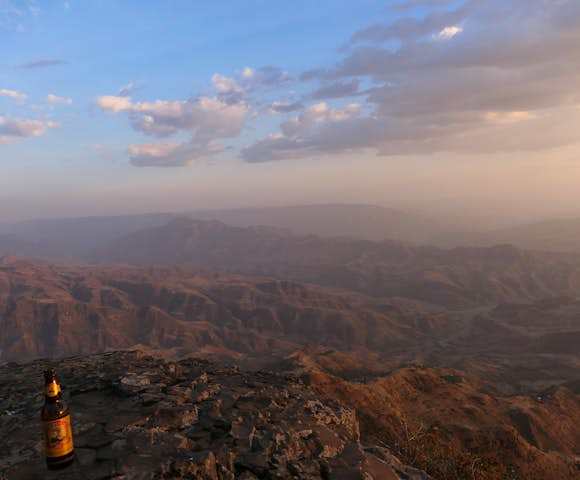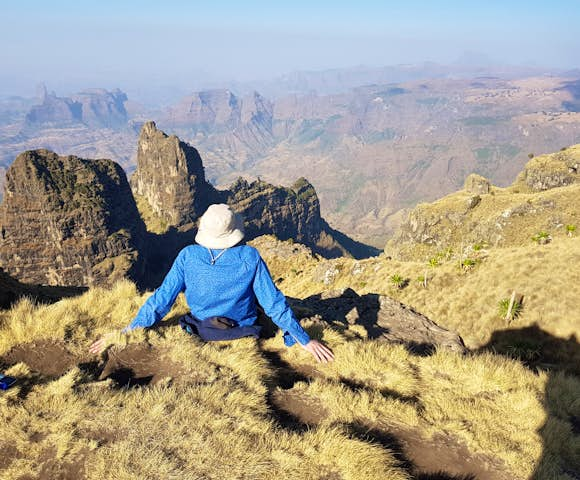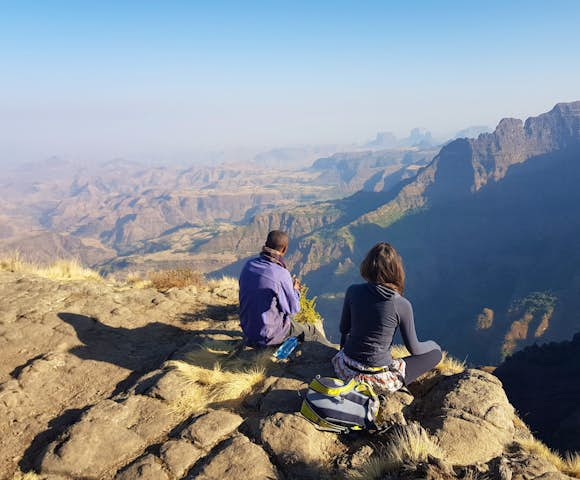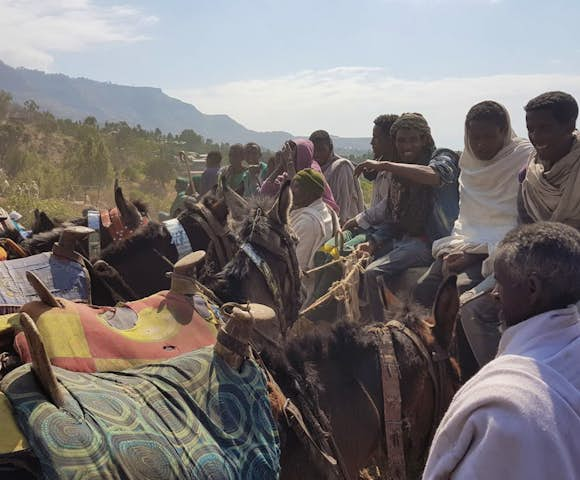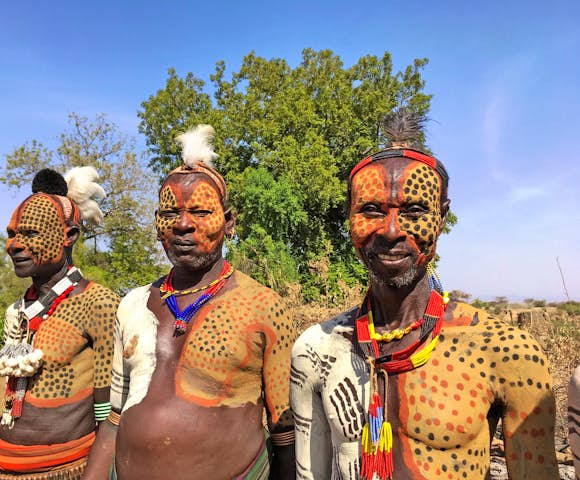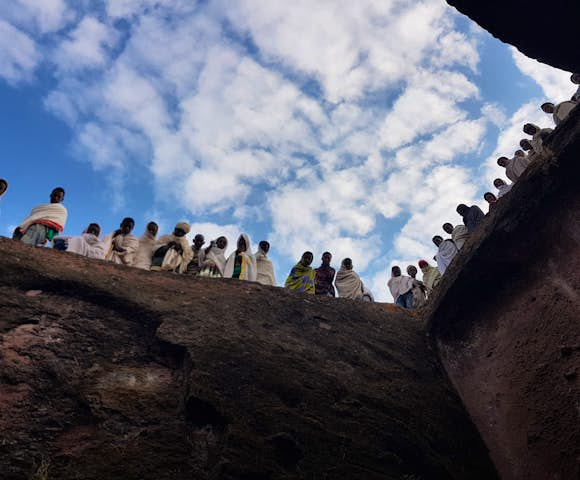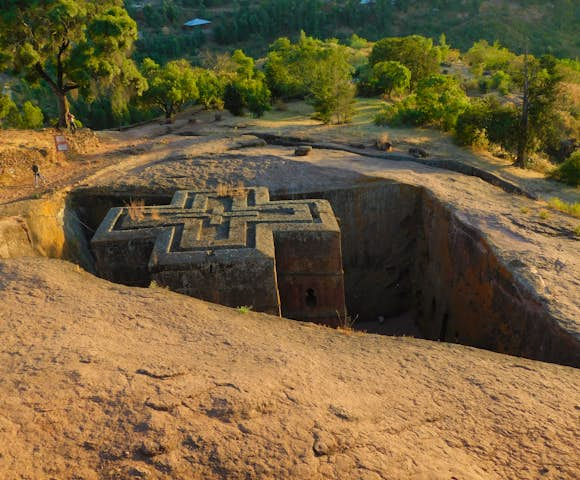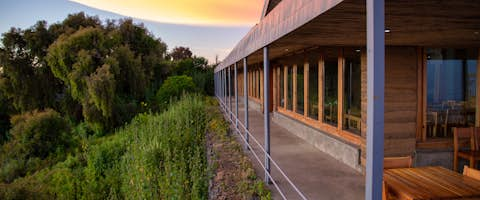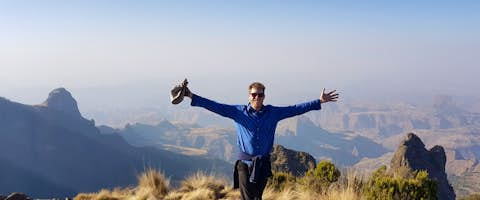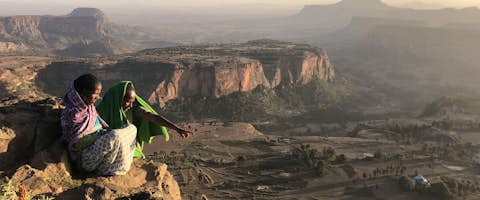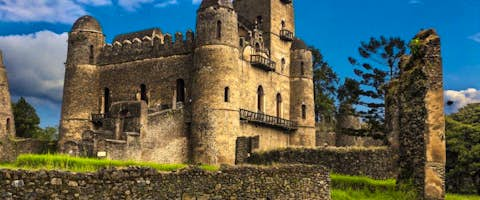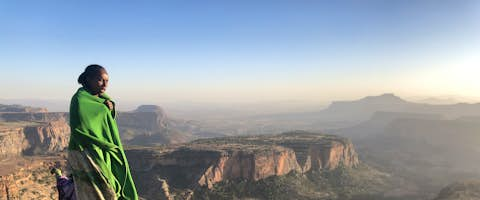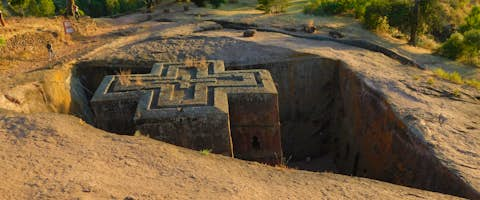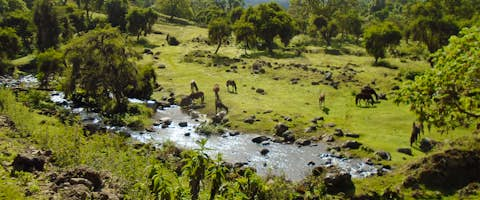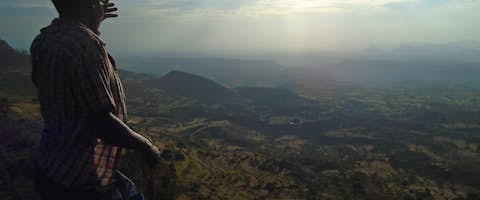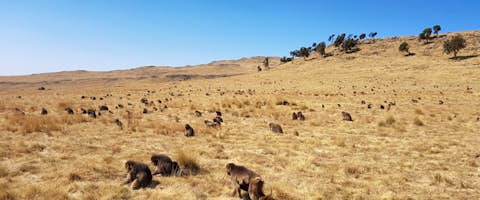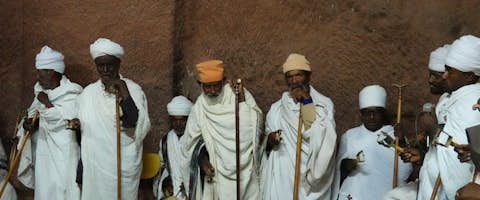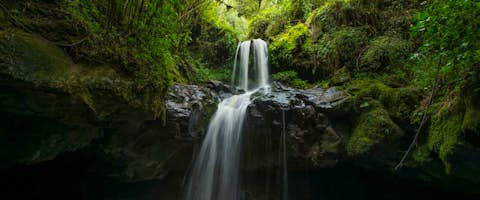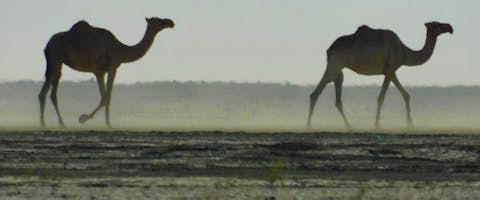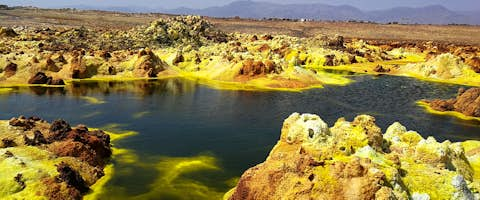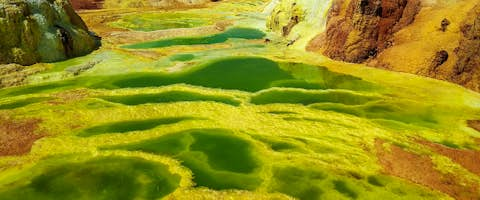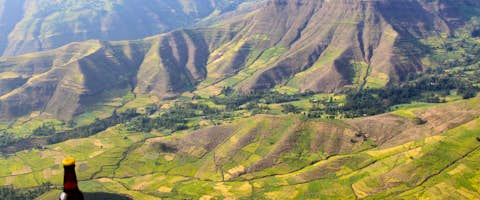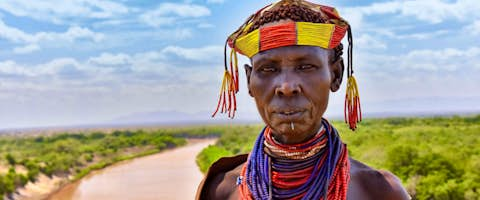Contents of our guide
- Major travel regions of Ethiopia
- Map of Ethiopia
- Best travel routes in Ethiopia
- Where to start your journey
- Our top landmarks and places to visit
- Things to do in Ethiopia
- Places to visit in Ethiopia
- How long to spend in Ethiopia
- Accommodation options in Ethiopia
- When to visit Ethiopia
- Costs of travelling to Ethiopia
- Guiding options in Ethiopia
- Safety in Ethiopia
- Types of tours to Ethiopia
At the end, we have an FAQ section. This includes questions about:
- Visas, money, photos & video, daily expenditures, what to bring, mobile & communications, vaccinations, Ethiopian cuisine, guidance on tipping, dress code
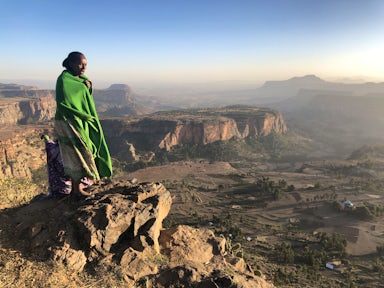
Major Travel Regions of Ethiopia
There are 4 major travel regions in Ethiopia:
Beyond these easy-to-define regions, there are a number of other popular travel destinations, these include the Bale Mountains National Park, Harar, Gambella National Park, and the Gheralta Mountains (which are sometimes included in the northern circuit).
We've broken down the major travel regions further on our Map of Ethiopia page.
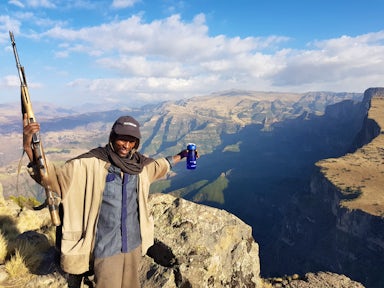
An armed scout must accompany you in the Simiens.
Map of Ethiopia
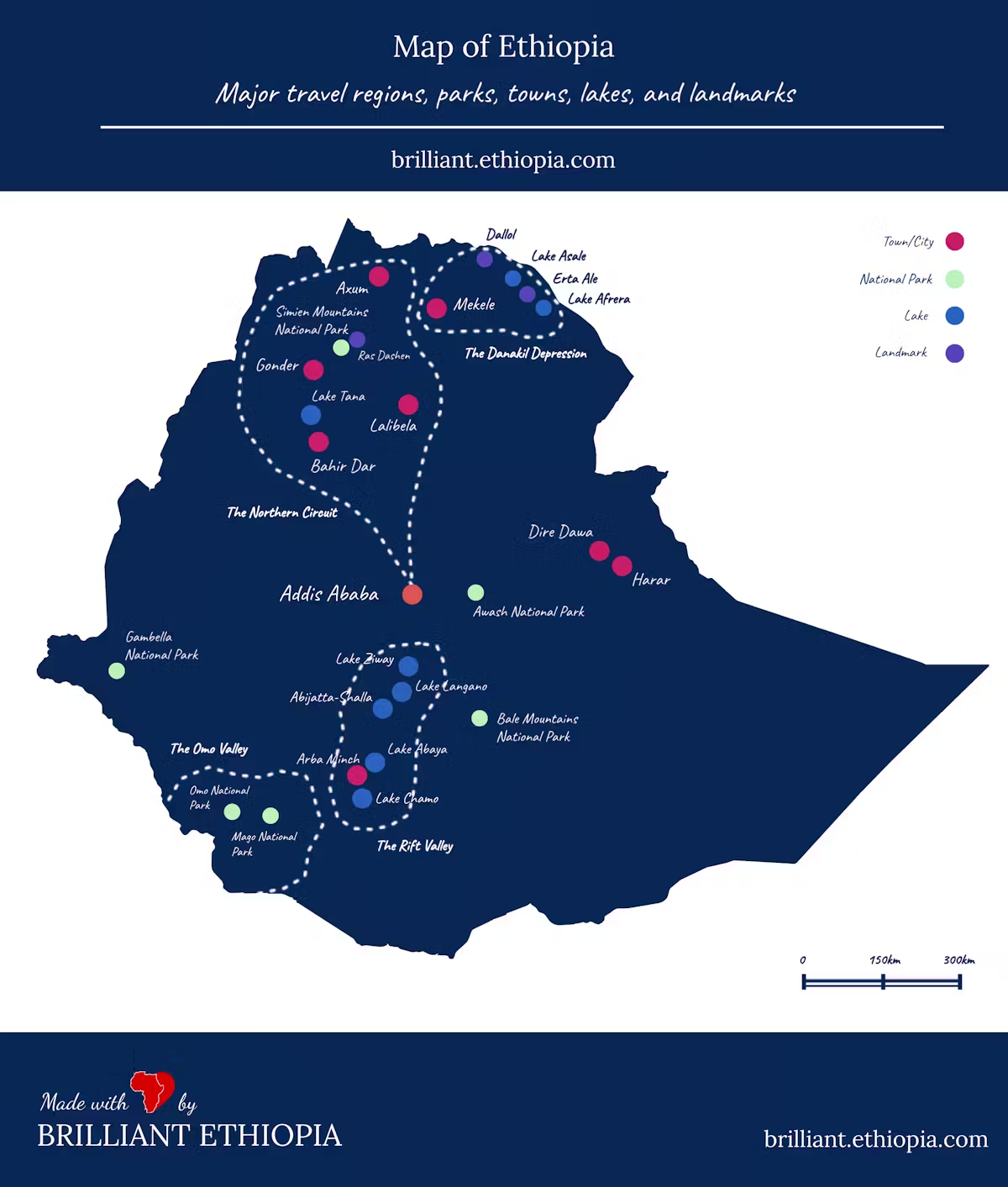
Best routes to take in Ethiopia
Which route you take around the country will depend entirely on:
- How much time you have available
- What your budget is
- Which destinations are most important to you
Typical Routes in Northern Ethiopia
A typical route is a 12-day northern circuit, which starts in Addis Ababa and loops clockwise around northern Ethiopia, finishing back in Addis.
The major destinations on the northern circuit are: Bahir Dar, Gonder, Simien Mountains, Axum, Lalibela, and the Gheralta Mountains.
Additional destinations you can include on a northern circuit include the Danakil Depression, community trekking, and Harar.
Typical Routes in Southern Ethiopia
The main destinations in the south of Ethiopia are the Bale Mountains National Park, the Rift Valley, and the Omo Valley. Which route you take will depend on which of these destinations, or which combinations of these destinations, you plan to visit.
It should be noted that travelling in the south of Ethiopia is much harder than travelling in the north. The infrastructure in the south is much less developed, and the access routes are fewer and less well maintained.
How to plan a trip
Given the diversity of experiences available in Ethiopia, the distances between destinations, and the difficulty of travelling using public transport, it's worth taking the time to understand your options so you end up with the best possible itinerary for you.
We've spent years travelling around Ethiopia, have partnerships with the very best local guides, drivers, and tour operators, and have helped hundreds of travellers explore this incredible country. Get in touch with us to start your journey.

Brilliant says
Ethiopia is wonderful, chaotic, and incredibly beautiful. However, it is an emerging tourist destination, and everyone on the ground is still learning. It is important to pack a sense of humour in unpredictable Ethiopia!
Where do I start? Where do I fly into?
Unless you are doing overland travel and coming in from a neighbouring country, you will arrive via international flight into Bole International Airport in the capital city, Addis Ababa.
Most international flights are overnight and arrive in the early morning in Addis (typically 6-7am). From here, you will clear immigration, collect your visa (more on that below) and head out to meet your driver in the car park.
Note that drivers are not allowed inside the airport terminal, so you will have to go outside to meet them. This can be a tricky affair, but airport staff are always on hand to help you and if you've booked with us, you will have key contacts who you can call if you need help.
Most people spend the first day in Addis, using the morning to relax and freshen up after the overnight flight, and then heading out to explore some of the city in the afternoon.
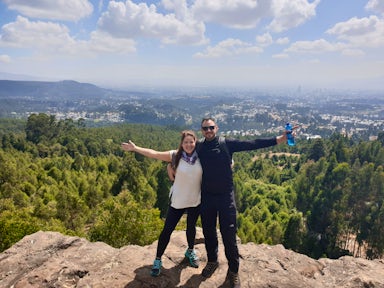
Landmarks in Ethiopia
What are the must-see places in Ethiopia?
We've compiled a list of some of our all-time favourite places, landmarks, lodges, wildlife, and restaurants in Ethiopia. Of course, we couldn't include everything, but if you're planning a trip, here are some amazing places you should consider visiting.
In the north
- Church of Saint George, Lalibela
- Ras Dashen, Simien Mountains
- Limalimo Lodge, Simien Mountains
- Fasil Ghebbi, Gonder
- Lake Tana and the Blue Nile Falls, Bahir Dar
- Gelada Monkeys, Simien Mountains
- Erta Ale and Dallol, Danakil Depression
- Abuna Yemata Guh, Gheralta Mountains
- Ben Abeba Restaurant, Lalibela
- Korkor Lodge, Gheralta Mountains
- Obelisk of Axum, Axum
- Hyena Man, Harar
In the South
- Ethiopian Wolf, Bale Mountains
- Bale Mountain Lodge, Bale Mountains
- Tribes of the Omo Valley, Omo Valley

Things to do in Ethiopia
Whether it's trekking in the mountains, exploring the volcanic landscapes, seeing the wildlife, or soaking up the culture and history of this country, there is no shortage of incredible experiences on offer in Ethiopia.
Any page we write can only scratch the surface of the wealth of opportunities in Ethiopia, but to give you an introduction into what's on offer, and hopefully inspire your next adventure, you can check out our guide to the top 10 things to do in Ethiopia.
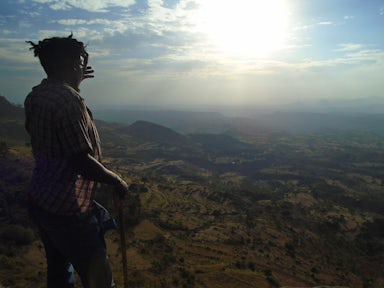
Admiring the view en route to Erar, Community Trekking.
Places to visit in Ethiopia
A land of infinite variety, there's something for everyone in Ethiopia. Whether you're an adventurer, a honeymooner, a family looking for a break, a solo traveller, or a group of friends looking for a once-in-a-lifetime holiday, Ethiopia will surprise, delight, and inspire.
Here's our rundown on the best places to visit in Ethiopia.
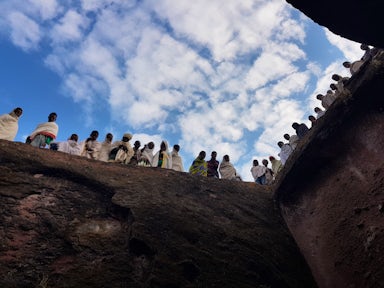
How long to spend in Ethiopia?
A typical trip to the north of Ethiopia is 10-12 days. In that time, you can visit many of the towns and national parks in the north. 10 days is the minimum time required if you want to explore all the destinations on the northern circuit.
With 12-15 days, you can also include the Danakil Depression and community trekking (our personal favourite thing to do in the country).
If you want to include the north and south, you will need around two weeks, although this depends on how many destinations you visit in the north. You will need at minimum of 4 days to explore the Omo Valley.
At Brilliant, most of what we do is build tailor-made trips, and we very rarely run the same trip twice. So no matter your budget, interests, or appetite for adventure, we can help create an itinerary that's perfect for you.
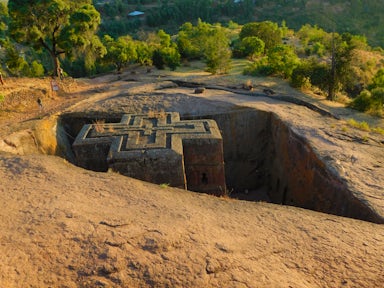
Accommodation Options in Ethiopia
Accommodation options in Ethiopia can fall short of international expectations (you can read more about this on our expectations guide here).
However, there are an increasing number of excellent lodges, and the major destinations have enough options to keep most travellers happy.
We've written a guide on accommodation options in Ethiopia, as well as the best lodges in Ethiopia and the luxury options available.

Cosy, cabin-esque rooms at Limalimo Lodge
When to visit Ethiopia
The best time to visit Ethiopia is between October and March. The country experiences a rainy season from June to September, although travelling during these months is still possible.
We've written an entire guide on when to visit Ethiopia.

A short walk takes you to the top of the falls
Costs of travelling to Ethiopia
The cost of your trip to Ethiopia will depend on 4 key factors:
- The length of your trip
- Your group size (solo travel is significantly more expensive)
- The accommodation preferences
- Whether you use local guides or professional guides
For more information, check out our guide explaining the travel costs in Ethiopia.
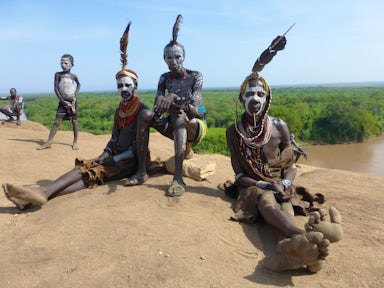
Karo Tribe in the Omo Valley.
Guiding in Ethiopia
There are two options for guiding in Ethiopia. The first is to use local guides in each of the regions you visit. Local guides are usually very friendly, and well-versed in the local myths and legends, but often do not have the same expertise when it comes to the facts and historical accuracy the destinations.
For some, this is part of the joy of travelling around a region, but others it can be a frustration.
If you opt for local guides, you will have different guides in each of the regions you visit. For example, once you arrive in Addis, you will be picked up at the airport by a local driver and taken to your hotel. A local guide will then meet you at the hotel and take you on a city tour of the capital. Once it's time to continue your journey, for example if you're heading up to Bahir Dar, a driver will take you to the airport in Addis and another driver will pick you up from the airport in Bahir Dar. Here, you will be met by another local guide who will look after you in Bahir Dar, and so on!
Our expectations guide talks more about what you can expect from local guides in Ethiopia.
If you'd prefer a little more continuity, or if you value guides with high levels of accurate knowledge, you can opt for a professional escort guide to travel with you around the country. These guides have excellent English and usually have formal training in tourism.
A professional escort guide does of course add to the trip cost, but it can be well worth it for some travellers.
Safety in Ethiopia
Ethiopia is, generally, a very safe country to travel around.
Addis Ababa is one of the safest African cities, and as long as you exercise common sense, it is unlikely you will have any problems with safety while travelling in Ethiopia.
We've written a guide on safety in Ethiopia if you want to learn more.
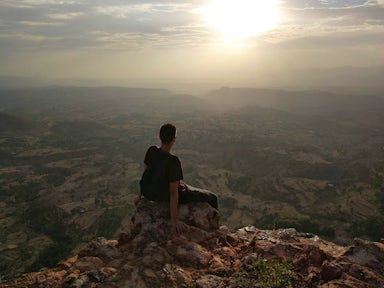
Taking a break, Community Trekking in Tigray.
Types of Tours to Ethiopia
With so many options for incredible tours in Ethiopia, it can be hard to know where to start, and how to plan the perfect adventure. Fortunately, our specialists have decades of experience in East Africa and know Ethiopia extraordinarily well, so get in touch with us to start your journey.
There are many ways to slice and dice itineraries to Ethiopia, but to help get you started, here are some of the trips possible here:
- Adventure Tours
- Cultural Tours
- Wildlife Tours
- Luxury Tours
- Coffee Tours
- Safaris in Ethiopia
- Private Tours
- Tailor-made Tours
Of course, these aren't mutually exclusive, and a single itinerary could be considered a blend of all the above!

The view on the approach walk to Blue Nile Falls
Ethiopia Travel FAQs
-
How do I get a visa for travel to Ethiopia?
All foreign nationals require a visa to enter Ethiopia. Fortunately, the process is very straightforward. You have two options for securing a visa, you can pay online in advance through the online evisa service, or you can obtain a visa on arrival at Bole International Airport.
If you use the online service, you will still collect your visa at the airport on arrival but you can skip the payment queue (which is welcome after a long overnight flight!) If you are paying on arrival, note that you cannot pay in Ethiopia
n Birr or card payment. You will need to pay in cash in either GBP, USD, or EUR. The price for a visa is around 50 USD for a standard 30 day visa. To secure a visa, your passport will need to be valid for at least the next 6 months from the point of arrival in Ethiopia.
If you need to extend your visa, you can do this at the Immigration Headquarters on Churchill Avenue in Addis. For multiple entry visas, or if you are visiting on business, you need to contact the Ethiopian embassy in your home country, as these cannot be obtained online or on arrival.
-
Can I bring foreign currency to Ethiopia?
It is fine to bring in foreign currency, but if you are carrying more than 3000 USD equivalent, you will need to declare this. Generally there is no reason to bring huge wads of cash with you, as there are ATMs all over Addis and in all the major towns in the north and south. You are only allowed to import or export a maximum of 200 Ethiopian Birr.
-
Am I allowed to bring my professional camera to Ethiopia?
Ethiopia is very photogenic, so you’ll want to bring a good camera with you to take the best snaps of your adventure. If you are planning on bringing a professional camera, you will need a permit. We can help you arrange this. There are no clear guidelines indicating which kinds of camera require permits, and handheld cameras are usually never questioned, but as a general rule - the bigger the camera, the more likely you’ll need a permit.
-
How much money should I bring?
The local currency is Ethiopian Birr. In many of the built up cities, you can pay by card but you should not rely on this. If you’re going anywhere remotely out of cities, you should have cash to hand. Even in Addis Ababa, many establishments won’t accept card payments, or internet connectivity issues could mean they can’t accept it at the time.
ATMs can be found in most built up areas, so you don’t need to bring lots of cash with you into the country. It’s also now wise to walk around with huge sums of money withdrawn from Addis to last for your whole trip, so the best thing to do is plan ahead based on where you are going and for how long. Your guides can help you with this, but withdrawals are typically limited to 4000 Birr (~120 USD) anyway so you will need to top up throughout your trip.
Note: your guides won’t mind being tipped in a foreign currency, so consider this when determining birr withdrawal amounts.
-
How much will I spend on daily expenditures?
We advise carrying enough small notes (10 birr notes are very handy) for small payments and tipping. If you’re travelling to the Omo Valley, you’ll need enough 5 or 10 birr notes to pay for photographs. Daily expenditure will depend on personal preferences and requirements, and of course what is included in your tour with us. 500-800 birr (20-30 USD) per day is a good ball park to help you budget, and this will cover lunches, dinners, drinks and small personal spending. It does not include breakfast, excursions, entrance fees etc. which will typically be included in your tour price.
-
What should I bring when travelling to Ethiopia?
Much of Ethiopia is highland, which means temperatures are much milder than many countries in East Africa. Addis Ababa itself sits above 2000 metres, so you’ll be acclimatising the moment you step off the plane!
Given the diversity of climate from region to region in Ethiopia, you need to pack for the full spectrum of weather conditions (depending on where you are going, of course). In the Danakil Depression, temperatures will be approaching 40°C, whereas in the heights of the Simien Mountains at night, temperatures can fall to below freezing.
In general, daytime temperatures will range from 15°C to 25°C - so pack light clothes with a jacket/coat for the evenings.
Most hotels offer a laundry service, so you don’t need to bring too much! Remember, Ethiopians are conservative dressers so please respect this and dress to cover at least your knees and shoulders. Our trekking in the Simien Mountains page contains a full kit list for hiking in Ethiopia.
-
Will I get mobile data in Ethiopia? Can I get a local SIM?
The internet in Ethiopia is intermittent, and internet outages are frequent (either voluntarily during protests/civil unrest or involuntarily due to infrastructure).
Most hotels in built up areas will offer internet which is generally reliable. Ethiopia has just one telecom provider, the state-owned Ethio Telecom. The mobile data coverage is surprisingly good.
You will need to purchase a SIM card on arrival in Addis, and unfortunately it is not a simple process! Your guide will help you organise this, but essentially you will need to get a SIM card cut for your phone and they’ll take your passport details and a photo in the shop. It costs around 50 Birr (~2 USD). There are mobile data bundles available, depending on how much data you plan to use.
-
What vaccinations do I need? Are there any medical pre-requisites?
It is important that you consult your GB or travel health nurse before visiting Ethiopia. Which vaccinations you will require, and specific advice pertaining to your safety while in the country will depend on your medical history and current health.
Thanks to Ethiopia’s high altitude, malaria is absent in much of the country. Most areas above 2000 metres are reportedly malaria free. That said, we still recommend taking anti-malarials as the disease is still present in low lying areas of the country.
A Yellow Fever vaccination certificate used to be required, but is no longer required at the time of writing, but it might be if you are coming from a country where the disease is present.
A cholera vaccination is required if you have a visited a cholera infected area within 6 days of arriving in Ethiopia.
It’s a good idea to bring a simple first aid kit with you, and you must bring any medicines you require with you, as local pharmacies have limited stocks. It’s extremely important that you take our comprehensive travel insurance when visiting Ethiopia.
-
What is the food like in Ethiopia?
The mainstay for Ethiopian cuisines is injera topped with all sorts of sauces, meats (vegetarian options available as well), and spices. You will usually be eating with your hands when eating injera, and you should take care to only eat with your right hand. Placing food in your mouth with your left hand is considered rude.
You’ll also likely encounter a gursha, a tradition in Ethiopia where your host will feed you a piece of the meal - this should always be accepted! Ethiopian food is great, but if it’s your first time in the country and you are spending a number of weeks here, you should strike a balance between local cuisine and international foods that you are more accustomed to. We speak from experience...
You can learn more on Ethiopian cuisine page.
-
Is there a general dress code for travelling in Ethiopia?
Ethiopians are conservative dressers, so you should take care to respect this and dress accordingly. Clothing should cover the knees and shoulders. Of course, allowances are made in certain parts of the country (e.g. the Danakil Depression) where the searing heat demands shorts!
-
What guidance on tipping?
Tipping is vitally important in Ethiopia and is somewhat of a cultural expectation. While tipping is hugely appreciated by the local staff and we recommend tipping generously where you can, it can be difficult social terrain. We hope the below advice can help you avoid any awkward/uncomfortable situations.
The social awkwardness is often worse regarding the amount of the tip rather than whether or not to tip at all (as most travellers will provide some amount of tip). One approach that we have found works well is to decide beforehand how much you want to tip, then take out and fold up the notes and place them firmly in your guide/drivers hands, thank them for their help/services and then move on.
You don't want to be in a position where you are being watched as you take out notes one by one deciding when to stop. As a general guide, we recommend tipping 10 USD per day for guides, and 5 USD per day for drivers/support staff (drivers, cooks etc.).
People do often tip much higher than this but it comes down to your budget, so our suggestion would be to start at 10 USD/day and go up/down from there depending on the quality of service and your budget. It can be tricky but it's important to feel like you're tipping what you feel is deserved whilst sticking to your budget!

Brilliant says
Responsible tourism is woven into the values of Brilliant Ethiopia. It’s impossible to separate what we do from why we do it. We don’t just want to reduce the negative impacts of tourism on the country, but we want to actively increase the positive impacts that tourism can have on the local communities and businesses. As a traveller and guest in this incredible country, it is your responsibility to take the time to understand that nuances of the Ethiopian way of life, and to respect their customs and traditions.
Ready to Explore Ethiopia?
Ready to plan your Ethiopia adventure?
Listen
We'll spend some time listening to your aspirations, then discuss the kind of experience that might suit you.
Match
Next we'll discuss the options, shortlist the best trips for you and present you our impartial recommendations.
Reserve
We'll place a 24 hour hold on your preferred option - without obligation - whilst we talk through the details.
Whatever your budget, group size, length of stay, preferred activity or appetite for adventure, we can help.
+1 315 645 2889

